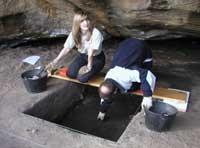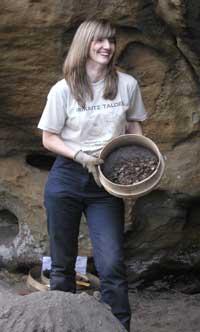The men of Jaizkibel 8,000 years

The discovery was made by archaeologists Mari Jose Iriarte and Alvaro Arrizabalaga, researchers of the Society of Aranzadi Sciences and the University of the Basque Country. One of the great values of the deposit is that the materials that have accumulated for thousands of years have not been touched, moved or displaced. This offers archaeologists a very rich information. During the survey, researchers have clearly detected stratigraphy. What has been found is the skeleton of the man who was buried in a shell, and for dating by carbon-14 three pieces of coal, shell and bone have been used between the traces appearing in the tomb. In the Netherlands, Groningen, tests of 14 carbon have been conducted and three materials have been around 8,300 years old.

Since no one has moved the lands of the burial for thousands of years, the skeleton has appeared in a position in which the corpse was buried. The posture is forced, as it had the knees together to the chest. The researchers found that burial inside the shell is a sign of a burial ritual. Consequently, the burial of the Epipaleolith would be the oldest burial known in Euskal Herria.
This site of the area of Jaizkibel, discovered by Juan San Martín 20 years ago, is being explored with the support of the City of Hondarribia. Now, researchers have sent four more samples to the Groningen laboratory. They are samples of the lower and upper layers of the tomb whose dating will provide complete information about the deposit.
Buletina
Bidali zure helbide elektronikoa eta jaso asteroko buletina zure sarrera-ontzian











